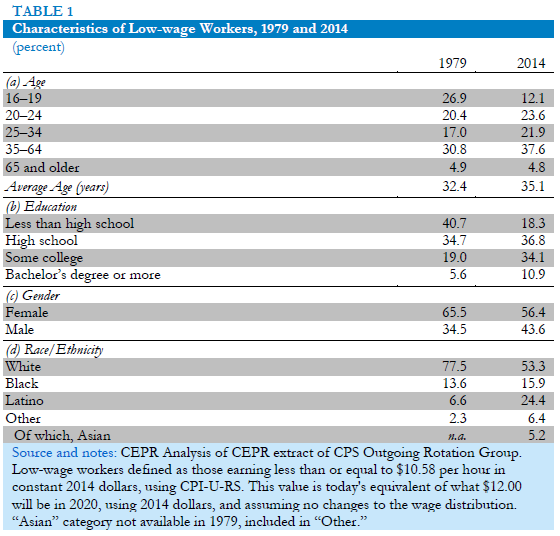May 2015, Cherrie Bucknor
Most economists would agree that, on average, workers who are older and better educated should earn higher wages than younger workers with less education. This is because older workers usually have more work experience and on-the-job training, leading to more skills. Similarly, each additional year of education leads to an increase in workers’ skills. These increases in skills, whether through education or work experience, should in theory be rewarded in the labor market with higher wages.
However, this has not been the case for low-wage workers. The minimum wage reached its peak value in 1968, when it was equal to $9.54 in inflation-adjusted 2014 dollars. Since then, the value of the minimum wage has continued to erode, and currently sits at $7.25. This has happened despite the fact that low-wage workers today are older and better educated than low-wage workers of the past.
